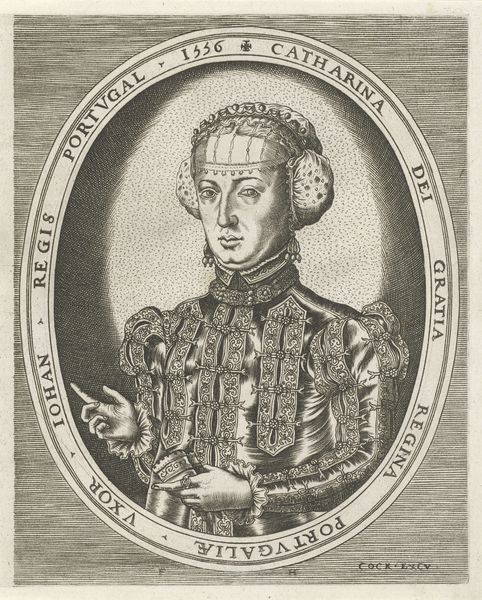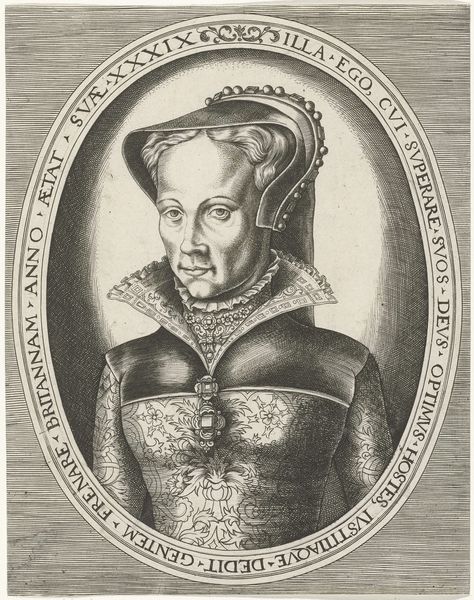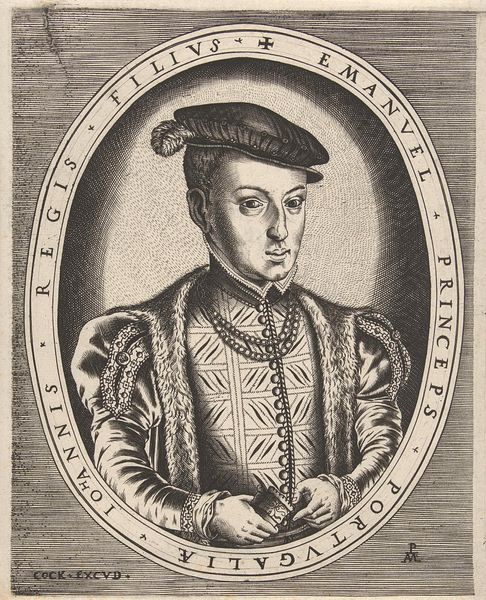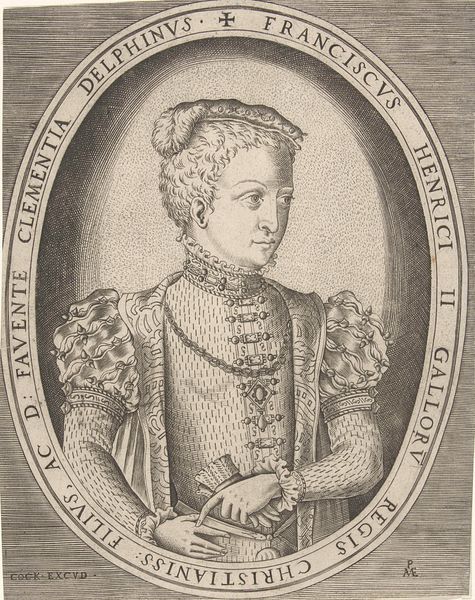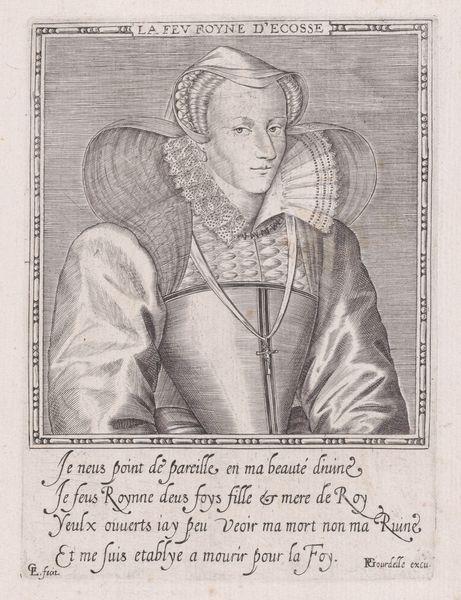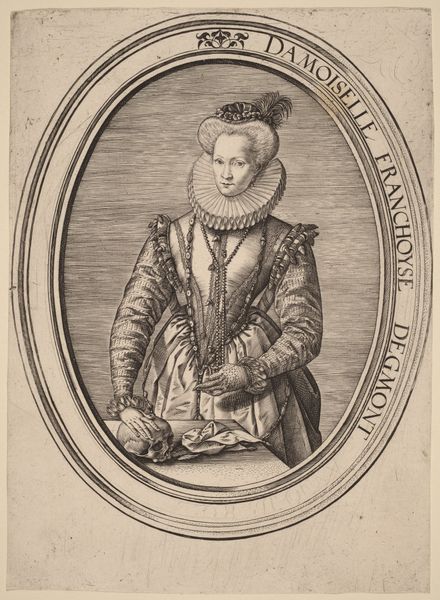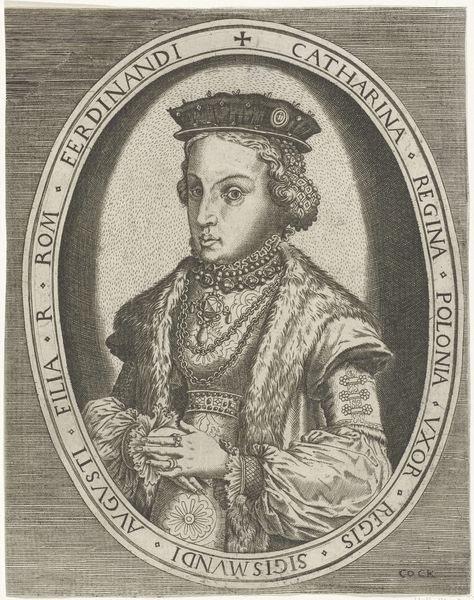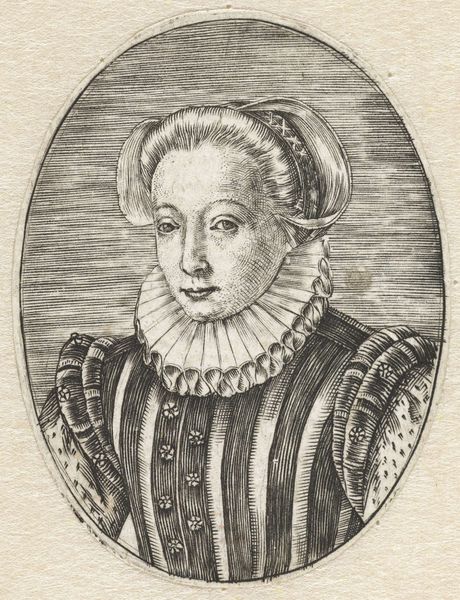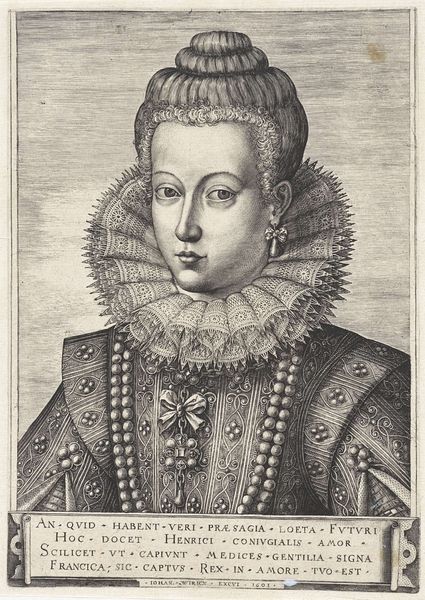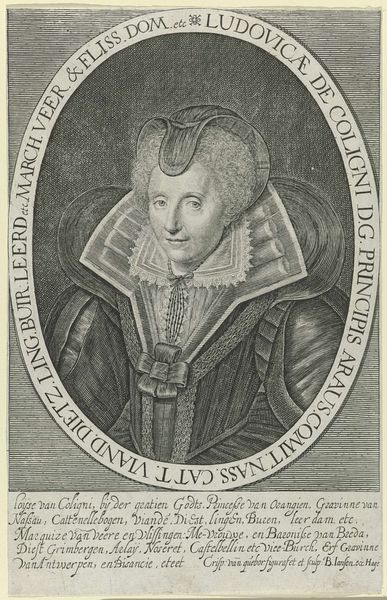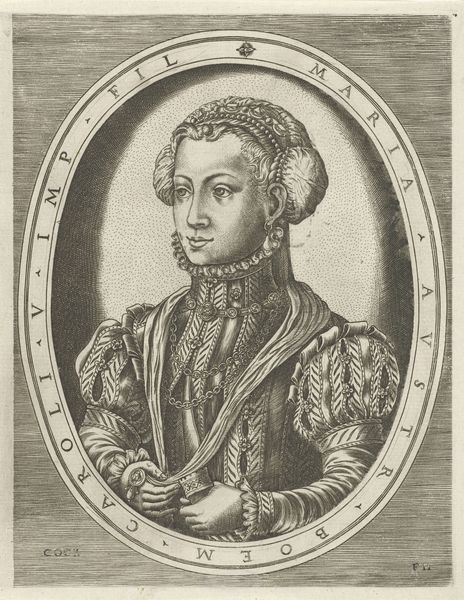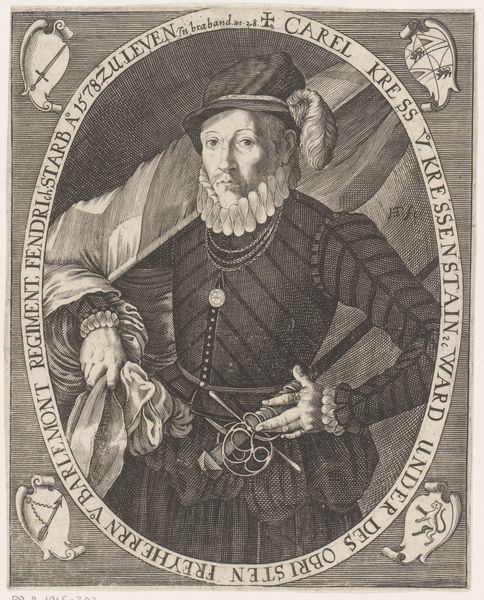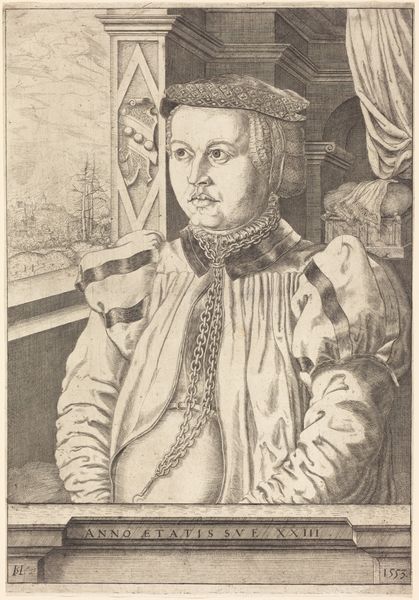
print, engraving
#
portrait
# print
#
old engraving style
#
figuration
#
11_renaissance
#
line
#
history-painting
#
northern-renaissance
#
engraving
Dimensions: height 203 mm, width 150 mm
Copyright: Rijks Museum: Open Domain
Curator: Let's delve into this remarkable engraving, "Portret van Mary I," which scholars estimate was created sometime between 1546 and 1562, now residing in the Rijksmuseum. The artist is Frans Huys. Editor: She has kind eyes, doesn't she? And look at the detail in her gown, almost floral. A sort of stern softness. Curator: It’s interesting you mention the "stern softness." This engraving exists in the broader context of Mary’s complex and often brutal reign. To fully appreciate this portrait, one needs to understand the historical currents—religious conflict, political power struggles—that defined her life and the era. The engraving inevitably engages with the patriarchal power structures. The very act of portraying a female monarch engages with ideas about gender, power, and representation. Editor: Oh, absolutely, one can imagine all that history sitting, not so lightly, on her shoulders while posing. But doesn’t the medium—engraving, those fine lines—somehow temper that historical weight? Give it a certain… fragility? Curator: A fragility, yes, but perhaps also a resilience. The lines of the engraving, while delicate, also create a sense of permanence. The surrounding inscription—"She is 39 years old. She to whom I hope to overcome," and further "I gave a just people the most powerful enemies so as to constrain the nation of Britain." It frames her literally and figuratively, emphasizing her role as both a person and a figurehead. This duality, this intersection of the personal and the political, speaks volumes about the complexities of her rule and its historical representation. Editor: It almost makes you want to write her a letter, doesn't it? Tell her we see her beyond all the historical noise. Tell her… well, tell her to hang in there! Maybe have a little more joy in her reign... not just be known as Bloody Mary. Curator: Exactly! It makes one reflect on how representations of historical figures affect collective memory, perpetuate narratives, and shape future understandings of power, gender, and national identity. Editor: It’s an echo, isn't it? She looks back and now we can't help but look back at her.
Comments
No comments
Be the first to comment and join the conversation on the ultimate creative platform.
